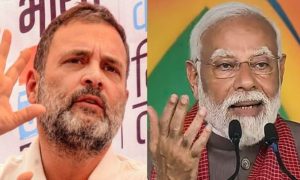The CMIE all-India joblessness rate had skyrocketed to a peak of 23.52% in April, 2020, the month which saw Covid-induced lockdowns; though the rate eased thereafter, it climbed to another high of 11.84 % in May 2021.
India’s unemployment rate has risen steadily – and rather sharply – since September and crossed 9% on a 30-day moving average basis on December 19, as per the data published by the Centre for Monitoring Indian Economy (CMIE). This is the highest level of joblessness in the country since the pandemic.
Separately, the payroll data released by the EPFO on Tuesday also indicated a slowdown in the formal sector job creation, signalling a slowing of economic momentum of late.
Read More: Sebi board may discuss buyback norms today. Full details
The CMIE all-India joblessness rate had skyrocketed to a peak of 23.52% in April, 2020, the month which saw Covid-induced lockdowns; though the rate eased thereafter, it climbed to another high of 11.84 % in May 2021. Since July 1, 2021, the 30-day trailing unemployment rate has never been above 9.1%.
Labour market experts say even as more people are entering the workforce, availability of jobs is not keeping pace with it.
The CMIE defines the unemployment rate as the number of persons not employed but willing to work and actively looking for a job as a fraction of the labour force.
On December 19, all-India CMIE unemployment rate based on the 30-day moving average was 9.11%. It shot up to 8% in November, its highest level since August, when it had touched 8.28%. The rate stood at 6.43% in September and 7.77% in October.
Read More: SBI’s stake will drop below 26% after March 2023: Yes Bank CEO
About 0.73 million new members were added to the social security schemes run by the EPFO in October, down from 0.98 million in September. New member additions have been on the decline after hitting a high of 1.15 million in July 2022.
The number of households demanding for work under Mahatma Gandhi National Rural Employment Guarantee Act had risen to 18.5 million in November from 15.5 million in October. In December till now, 17.1 million households have sought work under the scheme, according to the data.
“Economic growth has not revived, exports have fallen. MSMEs have been doing poorly since 2016. People who have returned to urban areas from rural areas are still looking for work or are finding only low level jobs,” said Santosh Mehrotra, labour economist and retired JNU professor.
The government, however, relies on the Periodic Labour Force Survey for data on employment and unemployment.
“Many private companies/bodies/research organisations conduct different surveys based on their own methodology, CMIE is one amongst them,” minister of state for labour and employment Rameswar Teli had informed the Lok Sabha on December 19 in response to a question by MP Rajan Vichare on the number of unemployed people according to the CMIE data.
Teli noted that the all-India unemployment rate had declined to 4.2% by 2020-21 from 4.8% in 2019-20 and 5.8% in 2018-19. “The estimated Worker Population Ratio (WPR) on usual status for persons of age 15 years and above was 47.3%, 50.9% and 52.6% during 2018-19, 2019-20 and 2020-21, respectively, which shows that employment in the country has increasing trend,” he further said.



































